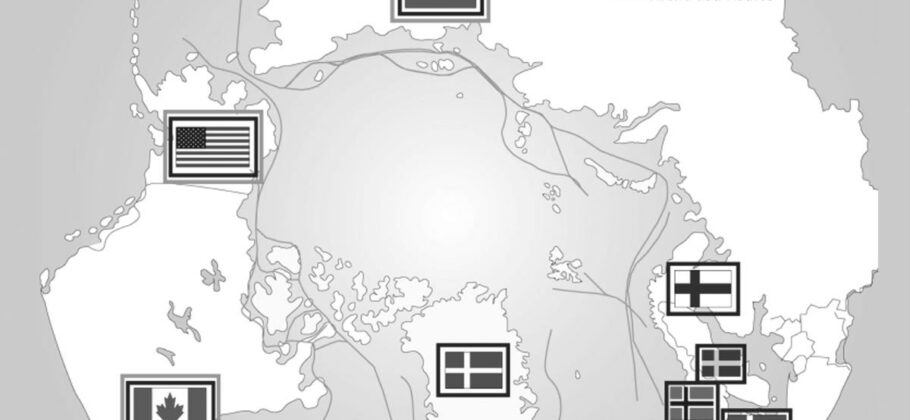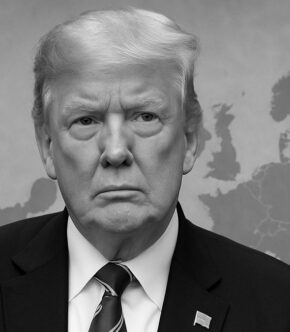A New Global Flashpoint
Once seen as a desolate, icy frontier, the Arctic is rapidly becoming one of the most hotly contested regions on Earth. With the ice melting at a rate four times faster than the rest of the planet, a new world of opportunities and risks is emerging. Global powers such as the United States, Russia, China, the European Union, and Canada are rushing to assert influence over a region that may hold the key to energy, shipping, security, and climate survival.
According to Johanna Ikävalko, director of Finland’s Arctic Centre, “There is an elevated need for high-performance icebreakers,” but the concern goes far beyond shipping. She warned, “I started to think last summer that the world order will actually start to evolve from the Arctic — and now it’s even more possible.”
What was once a frigid no-man’s-land is now a chessboard for superpower strategy.
What Makes the Arctic So Valuable
At the heart of this new competition are the Arctic’s vast natural resources and newly accessible shipping lanes. The U.S. Geological Survey estimates the region contains 13 percent of the world’s undiscovered oil and 30 percent of its natural gas. These reserves are locked beneath layers of ice and tundra that are now easier to reach due to climate change.

The Arctic also promises major changes in global trade. The Northern Sea Route (along Russia’s Arctic coast) and the Northwest Passage (through Canada’s Arctic archipelago) could cut shipping times between Asia and Europe by thousands of miles, saving up to two weeks of travel. In the shipping industry, those time savings translate directly into lower costs and higher profits.
Russia: The Dominant Arctic Force
Russia controls nearly half of the Arctic’s coastline and has made it clear that it views the region as a central pillar of its future power. Since the 2000s, Russia has reopened more than 50 Soviet-era military installations, built deepwater ports, and stationed advanced weapons systems along its northern frontier.
Russia also maintains the world’s most powerful icebreaker fleet, with at least 50 vessels — 13 of them Arctic-capable and 7 nuclear-powered. These ships are critical for keeping shipping lanes open and asserting Russian control in extreme conditions. President Vladimir Putin has invested billions of dollars in infrastructure to support Russia’s Northern Sea Route and wants to make it a major global trade corridor.
Russia’s Kola Peninsula is home to the country’s Northern Fleet and is bristling with nuclear submarines and other strategic weapons. The region is seen as both a shield and a sword — protecting Russian territory while projecting power toward Europe and North America.
Andreas Østhagen, a senior fellow at the Fridtjof Nansen Institute, explained, “Russia needs investments and commercial actors who are interested in developing the Arctic — LNG resources, oil resources, or developing a northern sea route as a shipping lane.”
At the same time, Russia is carefully managing its relationship with China, allowing investments and joint military exercises, but maintaining tight control. Østhagen cautioned, “Be careful not to overrate the Russia-China relationship. Russia remains wary of letting China too deep into its Arctic.”
China: The Ambitious Outsider
Although China has no Arctic territory, it has declared itself a “near-Arctic state” and is aggressively trying to stake a claim. China’s northernmost city, Harbin, lies on the same latitude as Venice, Italy, but Beijing sees the Arctic as a critical zone for long-term economic and strategic expansion.
China’s approach is focused on infrastructure, real estate, and political influence. It has tried to buy stakes in Arctic ports and airports in Norway, Sweden, and Greenland. However, many of these efforts have been blocked by host countries concerned about security risks. Norway, for example, recently passed a law preventing the sale of land or businesses that could endanger national interests.
Despite the resistance, China is not giving up. It has formed a strategic partnership with Russia, investing billions in Arctic energy projects like the Yamal LNG terminal and participating in joint military patrols. In 2023, Chinese coast guard vessels entered the Arctic in a joint mission with Russia. In July of that year, long-range bombers from both countries conducted flights near Alaska, raising alarms in the United States.
Mayor Magnus Mæland of a northern Norwegian town described the pressure he felt: “As soon as I became mayor in late 2023, three delegations from China came knocking on my door. It’s because they want to be a polar superpower.”
China’s vision also includes a “Polar Silk Road” that would connect Europe and Asia through the Arctic, supplementing its Belt and Road Initiative. Beijing is investing in undersea cables, icebreaker ships, and scientific research in an effort to secure long-term influence.
The United States: Late to the Ice Game
Historically, the United States viewed the Arctic as a secondary priority. That has changed. The Department of Defense’s 2024 Arctic Strategy marked a major shift, identifying the region as vital for national defense, energy security, and environmental stability.
The U.S. has only two operational icebreakers — a stark contrast to Russia’s massive fleet — and just one major military base in the Arctic, at Pituffik in Greenland. However, the U.S. is ramping up investment in Arctic infrastructure, surveillance systems, and joint exercises with NATO allies. It is also expanding its operations in Alaska, where the Prudhoe Bay oil field remains a key energy asset.
As climate change accelerates and competition intensifies, the U.S. is seeking to regain lost ground. The updated strategy includes four pillars: enhancing security, promoting sustainable development, protecting the environment, and supporting international cooperation.
Some American strategists, including Thomas P.M. Barnett, have argued for even bolder moves. Barnett has proposed integrating Greenland and Canada more closely into the United States to form a stronger northern bloc.
“Trump may discount the cause of climate change,” Barnett wrote, “but he’s already zeroed in on its most disruptive outcome: mass migration from the Global South to the Global North. Better to move America’s borders further north and south than to suffer that inescapable pathway.”
The European Union and Greenland: A Balancing Act
The European Union, while not a unified Arctic power, is deeply involved through member states like Denmark, Sweden, and Finland. Denmark controls Greenland, a strategically vital island with access to the Northwest Passage and massive resource potential.
President Trump’s 2019 attempt to purchase Greenland shocked the world but reflected growing American interest in the island’s future. Greenland, home to vital minerals and a key shipping position, is becoming a geopolitical prize. Its government is pushing back against foreign ownership and aligning itself more with North American institutions.
Local leaders, however, warn that infrastructure limitations and environmental risks make development difficult. Niels Clemensen, CEO of Greenland’s only shipping company, said, “Come up here and see what you are actually dealing with.” He noted the harsh conditions, limited roads, and reliance on sea transport, adding, “It’s going to cost a lot of money.”
The EU is supporting investments in icebreakers and defense readiness, especially as Finland and Sweden have joined NATO. At the same time, European leaders are cautious about provoking Russia, which remains a major energy supplier despite sanctions.
Canada: A Sleeping Giant
Canada holds one of the largest Arctic territories in the world, but its ability to project power and protect its interests has been limited by underinvestment and slow policy development. The Northwest Passage, a key trade route, lies within Canadian waters, but its sovereignty is contested by the United States.
Canada’s Arctic infrastructure is weak, with many communities lacking all-season roads, ports, and high-speed internet. The country also has a limited number of icebreakers and a small military presence in the region.
However, experts believe Canada could become a leading Arctic power if it acts quickly. According to a January 2025 report, Canada must prioritize investment in ports, icebreakers, military facilities, and Indigenous partnerships. The report urged the government to “assert sovereignty, enhance defense, and promote cooperation.”
Indigenous communities, whose traditional knowledge and way of life are critical to the Arctic’s future, must be full partners in this strategy. Vittus Qujaukitsoq, a former Greenlandic minister, emphasized, “It is affecting our livelihood economically, but also threatening our traditional way of living.”
The Arctic is no longer a passive region. It is becoming a new center of global gravity where the interests of the world’s most powerful nations collide. Whether it is Russia’s military might, China’s economic ambition, America’s late awakening, Europe’s defensive recalculation, or Canada’s unrealized potential, the outcome will shape the global order for decades to come.
The ice may be thinning, but the stakes are growing thicker every day.











